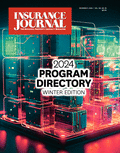Toyota Motor Corp. is spending $1 billion to form a research institute focused on the artificial intelligence and robotics technology it needs to make cars that can overcome driver errors and reduce traffic fatalities.
Toyota Research Institute Inc. will pitch in on the safety systems the automaker is developing to curtail car accidents that kill 1.25 million people per year worldwide. The company will also work toward making it easier for elderly drivers to hang onto their keys in aging countries including Japan and the U.S., Toyota’s biggest markets.
Getting an edge in this research would set Toyota apart from its Japanese peers, which have been pursuing fully autonomous cars under more conservative time frames than Google Inc. or Tesla Motors Inc. With Toyota President and racing enthusiast Akio Toyoda by his side, the newly-formed R&D unit’s chief executive said competing to put autonomous cars on the road will be an endurance contest, rather than a sprint.
“It’s possible at the beginning of a car race that you may not be in the best position,” said Gill Pratt, CEO of the institute and Toyota’s executive technical adviser. “It may be that other drivers are saying a whole lot about what their position is, and everyone may expect that a particular car will win. But of course, if the race is very long, who knows who will win? We’re going to work extremely hard.”
Toyota Research Institute will start operations in January, and the Japanese carmaker’s five-year initial investment will go toward setting up locations near Stanford University and the Massachusetts Institute of Technology. Pratt, 54, will oversee about 200 employees.
The son of an assembly line worker who installed tires on Ford models in Edison, New Jersey, Pratt joined Toyota after having serving as the U.S. military’s top robotics engineer. The former program manager for the Defense Advanced Research Projects Agency’s robotics efforts joined Toyota in September.
Toyota last month offered reporters test drives in a “highway teammate” concept car, a modified Lexus GS sedan that can enter public expressways, switch lanes and steer to the off ramp, all while picking spots to speed up or slow down based on the surrounding traffic. The company said it aims to introduce similar cars with automated highway driving by around 2020.
Google has put in more than 1.2 million miles with its test vehicles using software to drive themselves, and has estimated it could have a fully autonomous car ready for public roads by about 2020. Tesla has beamed Autopilot features into about 40,000 of its Model S sedans that enable the cars to self-steer on the highway.
The 2020 time frame has particular resonance for Japanese carmakers, as the companies want to showcase their progress toward self-driving in conjunction with Tokyo hosting the Olympics the same year.
“I used to say in the past that in a 24-hour race, if the automated vehicle beats our human-driven vehicles, I will embrace automated driving,” said Toyoda, 59, adding that his views have changed. “One hundred years ago, horses were replaced by automobiles because people found automobiles to be more fun than horses. One hundred years from now, I would like vehicles to remain loved by people.”
Topics Auto
Was this article valuable?
Here are more articles you may enjoy.


 CFPB Sues Walmart, Scheduling Platform for Alleged Illegal Pay Practices for Gig Drivers
CFPB Sues Walmart, Scheduling Platform for Alleged Illegal Pay Practices for Gig Drivers  Andrade Leaves Everest Group to Become USAA President and CEO
Andrade Leaves Everest Group to Become USAA President and CEO  After Nautilus Å˽ðÁ«´«Ã½Ó³» Wins Civil Suit vs. Murdaugh, Trial Starts for His Conspirator
After Nautilus Å˽ðÁ«´«Ã½Ó³» Wins Civil Suit vs. Murdaugh, Trial Starts for His Conspirator  Musk’s Massive Tesla Lithium Plant Hunts for Water in Drought-Hit Texas
Musk’s Massive Tesla Lithium Plant Hunts for Water in Drought-Hit Texas 

